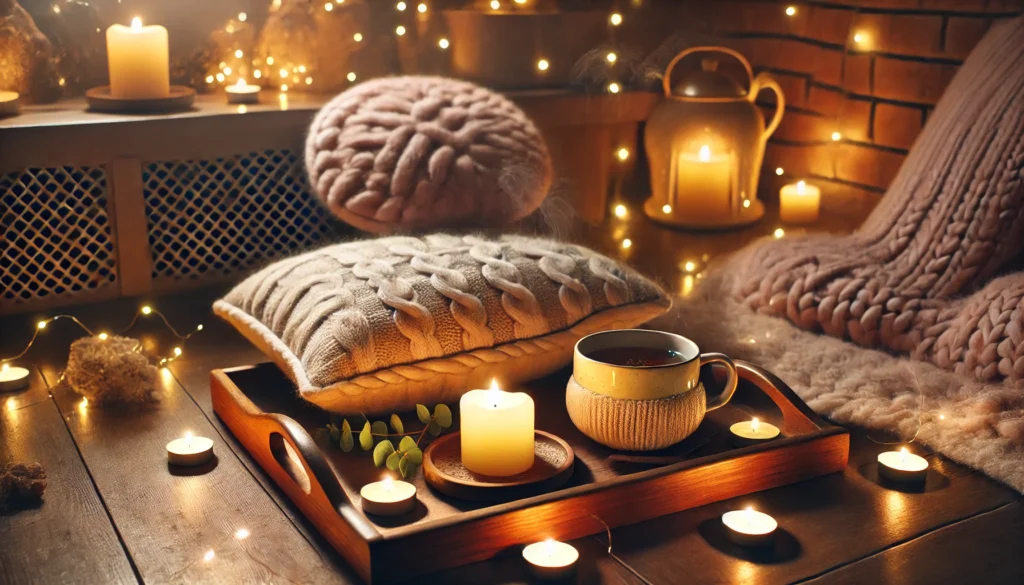Relaxation techniques have been around for centuries, with ancient cultures using methods such as meditation, yoga, and tai chi to calm the mind and body. These practices were not only about physical rest but also about achieving a state of mental clarity and spiritual balance. The understanding of relaxation has evolved, yet the core principles remain the same—calming the mind to heal the body.
You may also like: Effective Stress Management Techniques for Daily Life
Ancient Practices and Their Purpose
In ancient India, yoga was developed as a means to unite the body and mind, with practices like pranayama (breathing exercises) and dhyana (meditation) at its core. Similarly, in China, tai chi was practiced not just as a martial art but as a way to maintain health and tranquility through gentle movements. These techniques were deeply embedded in their respective cultures, serving both spiritual and therapeutic roles.
Evolution Through the Ages
As these practices spread across the globe, they adapted to different cultural contexts. In the West, meditation and yoga became popular in the 20th century, initially perceived as exotic but gradually gaining credibility. This evolution reflects a growing appreciation for holistic approaches to health, integrating body, mind, and spirit.
Modern Adaptations and Innovations
In contemporary society, relaxation has taken on new dimensions, with a focus on combating stress and anxiety. Mindfulness meditation, derived from ancient Buddhist practices, has been adapted into modern contexts, often used in therapeutic settings to alleviate stress. Additionally, techniques like autogenic training and biofeedback have emerged, combining traditional concepts with modern technology to enhance relaxation.
The Science Behind Relaxation
The physiological response to relaxation is the opposite of the stress response, known as the “fight or flight” reaction. When you relax, your heart rate slows, blood pressure decreases, and muscle tension dissipates, allowing your body to return to a state of equilibrium. This is often referred to as the “relaxation response,” a concept popularized by Dr. Herbert Benson in the 1970s.
Understanding the Relaxation Response
The relaxation response is a physical state of deep rest that changes the physical and emotional responses to stress. Techniques that trigger this response include meditation, deep breathing, and repetitive prayer. These practices help reduce metabolism, slow down the breathing rate, and decrease blood pressure, essentially reversing the effects of stress.
Neurobiological Effects of Relaxation
Relaxation techniques can have profound effects on the brain. Practices like meditation and deep breathing promote changes in brain activity, such as increased alpha waves, which are associated with a state of wakeful relaxation. Moreover, studies have shown that these activities can enhance the brain’s plasticity, the ability to adapt and change, which is crucial for learning and emotional regulation. This highlights the importance of integrating relaxation into daily life to foster cognitive resilience.
Psychological Benefits of Relaxation
Relaxation not only influences the brain physiologically but also provides psychological benefits. Regular practice can lead to increased focus, reduced anxiety, and overall improvements in mental health. It can also help in managing symptoms of depression and anxiety disorders, providing a non-pharmacological approach to mental wellness. By promoting a sense of calm and well-being, relaxation techniques serve as valuable tools in psychological self-care.
Techniques for Deep Relaxation
Breathing Exercises
Breathing exercises are among the simplest and most effective methods for achieving relaxation. They can be done anywhere, require no equipment, and can have an immediate calming effect. These exercises focus on conscious breathing patterns to soothe the nervous system and promote mental clarity.
Diaphragmatic Breathing
Also known as “belly breathing,” this technique involves inhaling deeply through the nose, allowing your diaphragm to expand fully. This method helps increase oxygen flow, promoting relaxation. Practicing diaphragmatic breathing regularly can enhance lung function and reduce stress levels by shifting the body’s focus from the sympathetic to the parasympathetic nervous system.

Box Breathing
This involves inhaling for a count of four, holding the breath for a count of four, exhaling for four, and then holding the exhale for another count of four. This structured breathing pattern helps in calming the nervous system. Box breathing is particularly useful in high-stress situations, providing a mental reset and grounding the individual in the present moment.
Alternate Nostril Breathing
A lesser-known but highly effective technique is alternate nostril breathing, which involves closing one nostril and inhaling through the other, then switching. This practice is said to balance the hemispheres of the brain and promote a sense of peace and harmony. It is often used in yoga to enhance concentration and prepare the mind for meditation.
Progressive Muscle Relaxation
Progressive muscle relaxation (PMR) is a technique that involves tensing and then slowly releasing each muscle group in the body. This practice not only helps in relieving physical tension but also encourages mental relaxation.
Step-by-Step Guide to PMR
To practice PMR, start by finding a quiet place and sitting or lying down comfortably. Begin with your toes, tensing the muscles as you inhale, and slowly releasing as you exhale. Gradually move up through your body, focusing on each muscle group. This systematic approach helps in increasing body awareness and releasing accumulated tension.
Benefits of PMR
The benefits of PMR extend beyond immediate relaxation. Regular practice can lead to improved sleep quality, reduced symptoms of anxiety, and enhanced overall well-being. By consciously relaxing the muscles, individuals can break the cycle of stress and tension, fostering a deeper state of calm.
Integrating PMR Into Daily Life
Incorporating PMR into your daily routine can be transformative. Practicing for just 10-15 minutes a day can significantly reduce stress levels. It can be particularly beneficial before bedtime, helping to unwind and prepare the mind and body for restful sleep.
Guided Imagery
Guided imagery is a technique that involves visualizing calming images or scenarios to promote relaxation. This can be facilitated through audio recordings or apps, which guide you through a narrative designed to take your mind off stressors and encourage a state of calm.
How Guided Imagery Works
Guided imagery works by engaging the imagination in positive and soothing visualization. By focusing on peaceful scenes or scenarios, such as a beach or forest, the mind is drawn away from stress and anxiety, creating a mental escape that promotes relaxation.
Therapeutic Uses of Guided Imagery
This technique is often used in therapeutic settings to help patients cope with stress, pain, and emotional challenges. Studies have shown that guided imagery can reduce anxiety, improve mood, and even enhance physical health by boosting the immune system.
Creating Your Own Guided Imagery
While many guided imagery sessions are available online or through apps, creating your own personal imagery can be equally effective. By visualizing a place or scenario that holds personal significance, you can tailor the experience to your specific needs, enhancing its soothing effects.
Mindfulness Meditation
Mindfulness meditation involves focusing on the present moment without judgment. By concentrating on your breathing or a specific sensation, you can cultivate a sense of peace and acceptance, reducing anxiety and stress.
The Practice of Mindfulness
Mindfulness meditation encourages awareness and acceptance of the present moment. Practitioners are taught to observe their thoughts and feelings without judgment, fostering a sense of detachment from stressors. This practice has been shown to enhance emotional regulation and increase resilience.
Benefits of Mindfulness Meditation
The benefits of mindfulness meditation are well-documented, including reduced symptoms of anxiety and depression, improved focus, and enhanced emotional well-being. Regular practice can also improve physical health by lowering blood pressure and boosting immune function.
Getting Started with Mindfulness
For those new to mindfulness, starting with short, guided sessions can be helpful. Apps and online resources offer structured programs to develop skills gradually. As familiarity with the practice grows, individuals can expand their sessions, integrating mindfulness into daily life for lasting benefits.
Yoga and Tai Chi
Both yoga and tai chi combine physical movement with mindfulness, promoting relaxation through gentle, flowing motions and focused breathing. These practices have been shown to improve flexibility, balance, and overall mental well-being.
The Benefits of Yoga
Yoga offers a holistic approach to relaxation, combining physical postures, breathing exercises, and meditation. Regular practice can improve flexibility, strength, and balance, while also reducing stress and enhancing mood. Yoga’s emphasis on mindfulness and breath awareness fosters a deep sense of relaxation and connection.
The Art of Tai Chi
Tai chi is a martial art characterized by slow, deliberate movements and deep breathing. Often described as “meditation in motion,” it promotes relaxation and stress reduction while improving balance and coordination. Tai chi is accessible to people of all ages and fitness levels, making it an ideal practice for those seeking gentle physical activity.
Integrating Yoga and Tai Chi into Your Routine
Incorporating yoga and tai chi into your daily routine can be a powerful way to promote relaxation and well-being. Many studios and online platforms offer classes for all levels, allowing you to practice in a way that suits your schedule and needs. Consistent practice can lead to long-term benefits in both physical and mental health.
Practical Applications: Integrating Relaxation into Daily Life
Incorporating these relaxation techniques into your daily routine can be transformative. Here are some tips on how to make relaxation a regular part of your life:

Set Aside Time for Relaxation
Dedicate specific times each day for relaxation practices. Even 10-15 minutes can make a significant difference. Establishing a routine helps in making relaxation a habit, ensuring that you consistently prioritize your mental and physical well-being.
Create a Relaxation Space
Designate a quiet, comfortable area in your home where you can practice relaxation techniques without interruption. This space should be free from distractions and conducive to relaxation, perhaps enhanced with calming scents, soft lighting, or soothing music.
Incorporate Relaxation into Your Workday
Take short breaks throughout the day to practice deep breathing or mindfulness. This can help reduce stress and increase productivity. Simple practices like standing up to stretch, closing your eyes for a few moments, or taking a few deep breaths can make a significant difference in maintaining balance during a busy workday.
Use Technology Wisely
Leverage apps and online resources for guided meditations and relaxation exercises. However, also ensure to disconnect from screens to avoid digital overload. Balancing screen time with tech-free relaxation activities, such as reading or spending time outdoors, is crucial for comprehensive well-being.
Encourage Relaxation in Social Settings
Encourage relaxation as a communal activity by engaging friends or family in group meditation or yoga sessions. Sharing relaxation practices can strengthen relationships, providing mutual support and accountability in maintaining a healthy lifestyle.
Future Implications: The Evolving Landscape of Relaxation
As our understanding of the mind-body connection deepens, new relaxation techniques and technologies continue to emerge. Advances in neurofeedback and virtual reality are paving the way for innovative approaches to achieving relaxation. These technologies offer immersive experiences that can help train the brain to enter a relaxed state more efficiently.
The Role of Technology in Relaxation
Emerging technologies, such as neurofeedback devices, allow individuals to monitor their brain activity and adjust their mental state in real-time. Virtual reality offers immersive environments that can transport users to calming, stress-free settings, enhancing traditional relaxation techniques.
Exploring New Methods and Innovations
Beyond technology, innovative methods like float therapy and sound baths are gaining popularity. Float therapy involves floating in a sensory deprivation tank, which can induce a deep state of relaxation. Sound baths use resonant sounds and vibrations to promote healing and stress relief, offering a unique sensory experience.
The Future of Relaxation Practices
The future of relaxation practices lies in integrating traditional techniques with modern innovations. As research continues to uncover the benefits of relaxation, new applications and approaches will emerge, offering diverse options for individuals seeking to enhance their well-being.
Conclusion
Relaxation is a powerful tool for enhancing both mental and physical health. By exploring and integrating various techniques into your daily life, you can cultivate a state of calm and resilience in the face of life’s challenges. Whether through ancient practices like yoga or modern innovations like neurofeedback, the path to deep relaxation is accessible and rewarding.
Embracing Relaxation as a Lifestyle
Incorporate these methods into your wellness routine and experience the transformative benefits of a relaxed mind and body. Embrace relaxation not just as an occasional indulgence but as a vital component of a healthy lifestyle. By making relaxation a priority, you invest in your long-term well-being, fostering a balanced and fulfilling life.

The Path to a Balanced Life
By understanding the science and history of relaxation and applying these strategies, you can foster a more balanced and fulfilling life. The journey to relaxation is personal and ongoing, offering opportunities for growth, healing, and self-discovery. Embrace this journey with an open mind and a commitment to well-being, and reap the rewards of a peaceful, centered life.
Further Reading:
11 Tips for Anyone Who Doesn’t Know How to Relax
Relaxation Exercises To Help Fall Asleep
Important Note: The information contained in this article is for general informational purposes only, and should not be construed as health or medical advice, nor is it intended to diagnose, prevent, treat, or cure any disease or health condition. Before embarking on any diet, fitness regimen, or program of nutritional supplementation, it is advisable to consult your healthcare professional in order to determine its safety and probable efficacy in terms of your individual state of health.
Regarding Nutritional Supplements Or Other Non-Prescription Health Products: If any nutritional supplements or other non-prescription health products are mentioned in the foregoing article, any claims or statements made about them have not been evaluated by the U.S. Food and Drug Administration, and such nutritional supplements or other health products are not intended to diagnose, treat, cure, or prevent any disease.


